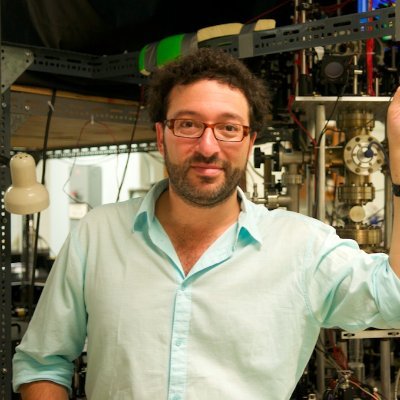Aephraim Steinberg
I know what you did last nanosecond: Asking photons where they’ve been


Date & heure
12/12/2024 – 11h
Lieu
Sorbonne Université – Jussieu
Amphi 45B
Accueil
While photons famously don’t follow definite trajectories, there are interesting questions one can ask – experimentally as well as theoretically – about where they have spent their time. I will introduce my talk by saying a few words about post-selection in general and the problems it raises in quantum mechanics (apologizing for the repetition to anyone who also attended my seminar the previous week), and then I will describe our latest series of experiments.
The problem of the interaction of a resonant electromagnetic field with a cloud of two-level atoms is so well studied that one would hardly expect it to hold any more mystery, and yet it turns out to still have surprises in store when one considers the effect of post-selection.
I will describe an experiment we initially built to observe optical nonlinearity at the single-photon level, aiming towards applications such as QND and quantum computing. I will pay particular attention to some of the strange effects we observed when post-selecting on the final state of a photon. In one, we could in a sense “amplify” the phase shift an individual photon wrote on a probe beam. Most recently, we began using this apparatus to probe how much time atoms are caused to spend in the excited state by a resonant photon. Specifically, we investigated whether the answer depends on whether the photon in question is transmitted or reflected Not only was the answer yes, but the result for transmitted photons turned out to be quite unexpected. I will present both theory and experiment supporting a simple, yet disturbing, connection between the delay time experienced by a pulse and the time atoms spend in the excited state.
Time permitting, I will briefly advertise some of our other photonic experiments, which focus mostly on foundational questions such as the nature of “weak” measurements and complex weak values, the generalization of quantum measurement theory to a setting where the observer is fully quantum, exponential compression of quantum data, and the generation of novel states for quantum metrology or super-resolving classical imaging.
REFERENCES:
[1] Observation of the nonlinear phase shift due to single post-selected photons, Amir Feizpour et al., Nature Physics 11, 905 (2015)
[2] How the Result of Counting One Photon Can Turn Out to Be a Value of 8 (« Weak-value amplification of the nonlinear effect of a single photon”), Matin Hallaji et al., Nature Physics 13, pages 540–544 (2017)
[3] Measuring the time atoms spend in the excited state due to a photon they do not absorb, Josiah Sinclair et al., PRX Quantum 3, 010314 (2022).
[4] How much time does a resonant photon spend as an atomic excitation before being transmitted?, Kyle Thompson et al., quant-ph/2310.00432 (2023)
[5] Experimental evidence that a photon can spend a negative amount of time in an atom cloud, Daniela Angulo et al., quant-ph/2409.03680
[6] See also Optica Quantum Vol. 2, Issue 2, pp. 91-102 (2024) ; https://arxiv.org/abs/2402.08060 ; https://arxiv.org/abs/2408.03398)
